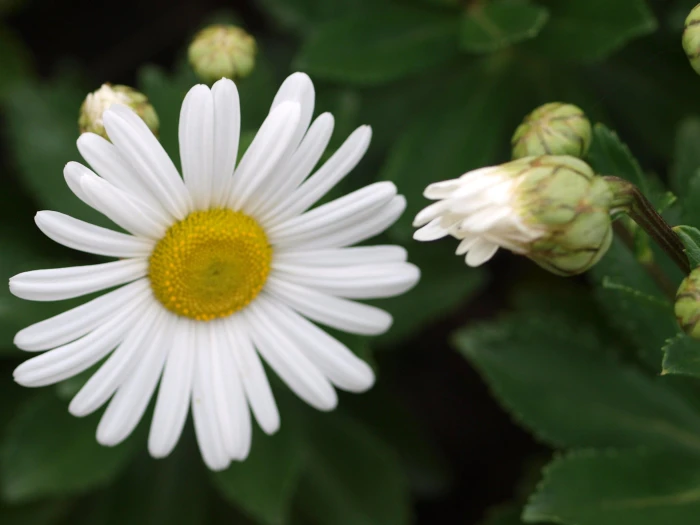Nippon Daisy
(Nipponanthemum nipponicum)
Nippon Daisy (Nipponanthemum nipponicum)
/
/

F. D. Richards
CC BY-SA 2.0
Image By:
F. D. Richards
Recorded By:
Copyright:
CC BY-SA 2.0
Copyright Notice:
Photo by: F. D. Richards | License Type: CC BY-SA 2.0 | License URL: https://creativecommons.org/licenses/by/2.0/ | Uploader: F. D. Richards | Publisher: Flickr |



















Estimated Native Range
Climate Requirements for Stevens Point, Wisconsin
| This Plant | Your Site | Plant Suitability for Your Location | ||
|---|---|---|---|---|
| • Precipitation | 17" - 75" | 32" | Your precipitation may be insufficient for this plant. Irrigate N" / year. | Irrigate N" / year |
| • High Temp. | 71°F - 89°F | 82°F | Your summer temperatures are normal for this plant. | Excellent |
| • Low Temp. | 10°F - 34°F | 5°F | Your winter temperatures may be too cold for this plant | Too cold |
This plant should grow well at your location with about N inches per year (Y minutes per month) of irrigation.
Summary
Nipponanthemum nipponicum, commonly known as Nippon Daisy, is a perennial herb sometimes behaving as a subshrub, native to coastal cliffs and seaside meadows of Japan, particularly on the island of Honshu. It typically grows up to 100 cm (40 inches) tall and is characterized by its glossy, dark green leaves that are mostly clustered near the top of the stem, giving it a distinctive appearance. The plant produces large, daisy-like flower heads up to 8 cm (3 inches) across, each with a central disc of yellow flowers, sometimes red or purple, surrounded by white ray flowers. These blooms are quite showy and appear in the late summer to fall, attracting pollinators.
Nippon Daisy is valued for its bright, showy flowers and its ability to thrive in coastal conditions, making it a suitable choice for seaside gardens. It is also used in borders, rock gardens, and as a cut flower due to its long vase life. In cultivation, it requires full sun and well-drained soils with low to moderate water once established. While generally low-maintenance, it may require protection from slugs and snails, which can damage the foliage. It is not known to be invasive but should be monitored to prevent unwanted spread.CC BY-SA 4.0
Nippon Daisy is valued for its bright, showy flowers and its ability to thrive in coastal conditions, making it a suitable choice for seaside gardens. It is also used in borders, rock gardens, and as a cut flower due to its long vase life. In cultivation, it requires full sun and well-drained soils with low to moderate water once established. While generally low-maintenance, it may require protection from slugs and snails, which can damage the foliage. It is not known to be invasive but should be monitored to prevent unwanted spread.CC BY-SA 4.0
Plant Description
- Plant Type: Herb
- Height: 1.5-3 feet
- Width: 1.5-3 feet
- Growth Rate: Moderate
- Flower Color: White
- Flowering Season: Summer
- Leaf Retention: Evergreen
Growth Requirements
- Sun: Full Sun
- Water: Low
- Drainage: Medium, Fast
Common Uses
Bank Stabilization, Border Plant, Butterfly Garden, Deer Resistant, Drought Tolerant, Groundcover, Low Maintenance, Rock Garden, Salt Tolerant, Showy Flowers, Street Planting
Natural Habitat
Coastal cliffs and seaside meadows
Other Names
Common Names: Montauk Daisy, Nippon-Chrysanthemum, Nipponchrysantheme, Hamagiku
Scientific Names: Nipponanthemum nipponicum, Chrysanthemum nipponicum, Leucanthemum nipponicum, Tanacetum nipponicum
GBIF Accepted Name: Nipponanthemum nipponicum (Franch. ex Maxim.) Kitam.